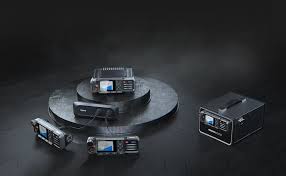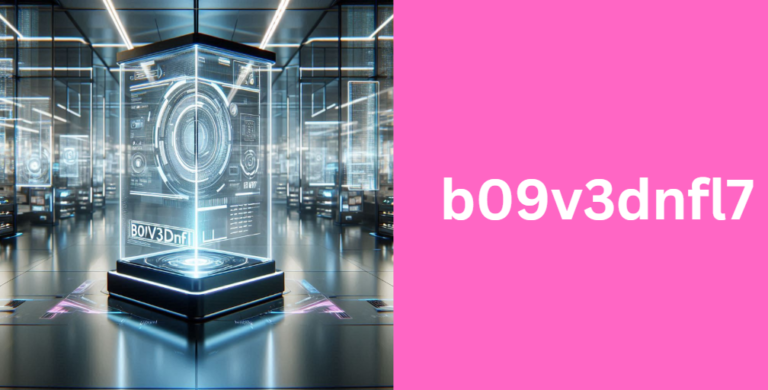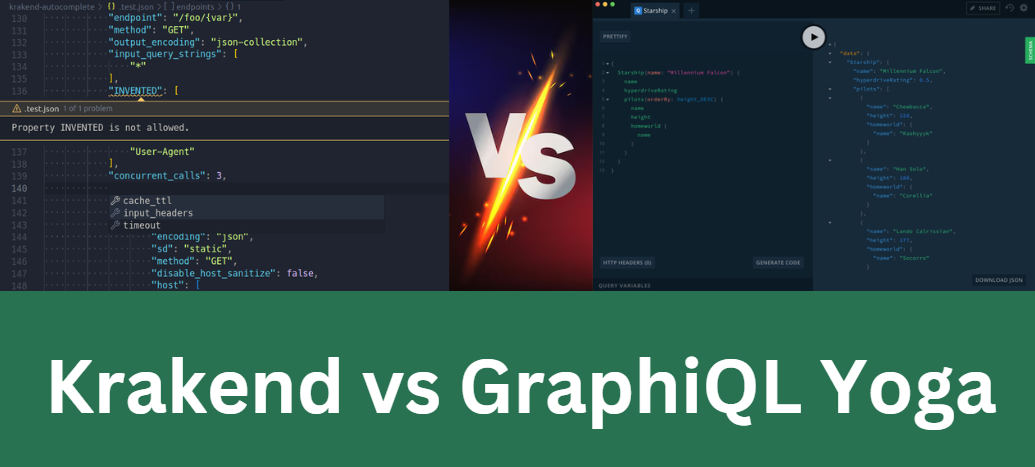
In today’s digital landscape, the need for scalable, efficient, and reliable APIs is greater than ever. Krakend and GraphiQL Yoga are two powerful tools in the API development ecosystem, but they serve distinct purposes.
If you’re trying to decide between krakend vs graphiql yoga, this detailed comparison will help you understand each tool’s strengths, use cases, and when to use one over the other.
What is Krakend?

Krakend is an advanced API Gateway designed to handle multiple types of APIs and services. It aggregates REST and GraphQL APIs into a single endpoint, simplifying API management and interaction for clients. Krakend’s main goal is to optimize microservices architectures by providing centralized API orchestration and performance improvements.
Key Features of Krakend:
API Aggregation:
Krakend can combine different APIs (REST, GraphQL) into a unified response. This is especially useful for microservices where data from multiple sources is required.
Performance Optimization:
Known for its low latency and ability to handle high traffic, Krakend ensures fast and efficient communication between clients and backend services.
Scalability:
Designed for large-scale systems, Krakend can scale to meet high-demand applications by managing multiple microservices with ease.
Security and Monitoring:
With built-in support for rate-limiting, authentication, and logging, Krakend enhances the security and monitoring of your APIs.
When to Use Krakend?
- Microservices environments: Krakend is ideal when you need to aggregate and manage APIs from different services into a unified response.
- High-performance applications: If your system requires handling a large number of requests efficiently, Krakend’s performance optimizations are a major advantage.
- Multi-API management: If you’re dealing with both GraphQL and REST APIs, Krakend provides a simple way to manage both under a single umbrella.
What is GraphiQL Yoga?
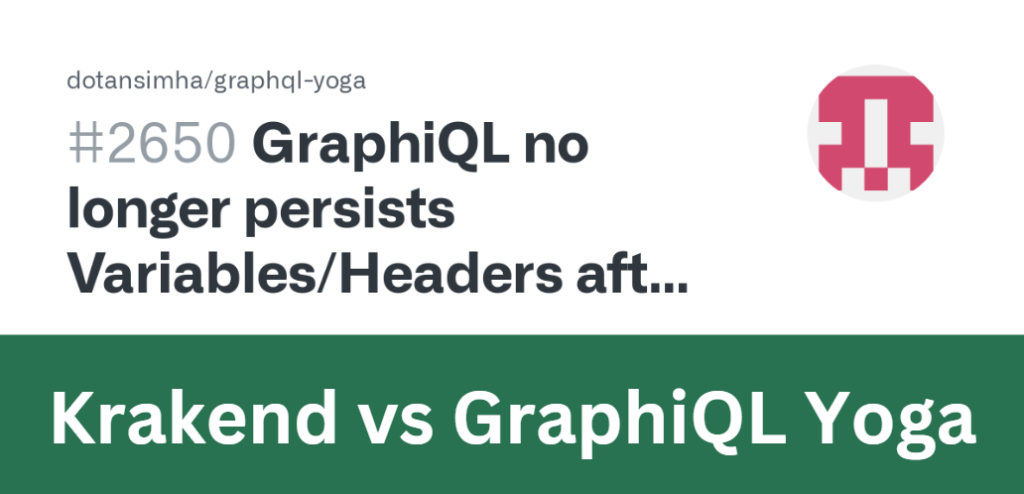
GraphiQL Yoga is a tool in the GraphQL ecosystem that serves as an in-browser IDE for exploring and interacting with GraphQL APIs. It is often used for API testing, schema exploration, and queries, offering developers a visual interface to interact with GraphQL endpoints.
Unlike Krakend, which serves as an API Gateway for aggregation, GraphiQL Yoga is a frontend tool designed for API exploration and development.
Key Features of GraphiQL Yoga:
Interactive Query Builder:
GraphiQL Yoga enables developers to write and test GraphQL queries directly from the browser, providing real-time feedback on queries and mutations.
Schema Exploration:
With GraphiQL Yoga, developers can view the complete schema of the GraphQL API, which helps in understanding the structure and available queries of the API.
Error Feedback:
It provides helpful error messages, which is crucial for developers working with GraphQL to understand where their queries might be going wrong.
Auto-completion:
GraphiQL Yoga provides autocomplete for GraphQL queries, making it easier to interact with complex GraphQL endpoints.
When to Use GraphiQL Yoga?
- GraphQL development: GraphiQL Yoga is an excellent tool for developers working on GraphQL APIs who need an easy and efficient way to test and debug their queries.
- API exploration: If you are unfamiliar with a GraphQL API, GraphiQL Yoga helps in exploring the schema and understanding what data can be queried and mutated.
- GraphQL learning: For new developers looking to learn GraphQL, GraphiQL Yoga provides a simple and intuitive environment for experimenting with GraphQL queries.
Krakend vs GraphiQL Yoga: Key Differences
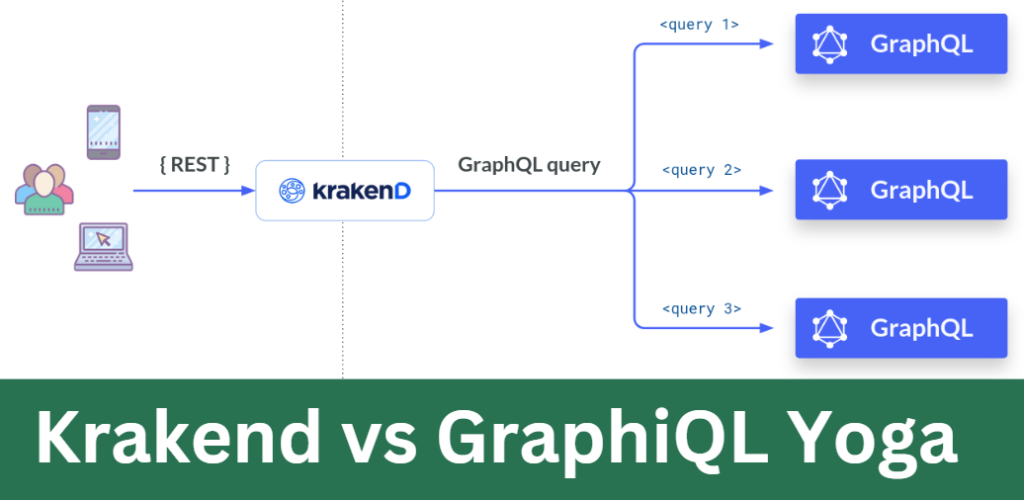
While Krakend vs GraphiQL Yoga might seem like an apples-to-apples comparison, they serve entirely different functions within the development process. Here are some of the key differences:
Purpose and Functionality
- Krakend: An API Gateway and orchestrator for aggregating multiple APIs (REST, GraphQL). It acts as a single entry point to interact with various backend services.
- GraphiQL Yoga: A GraphQL client IDE designed specifically for testing, exploring, and interacting with GraphQL APIs. It is a frontend tool focused on the development and debugging of GraphQL queries.
Use Cases
- Krakend: Ideal for managing microservices architectures, aggregating multiple API sources, and optimizing API traffic across distributed systems.
- GraphiQL Yoga: Perfect for frontend development involving GraphQL, where developers need to test and interact with GraphQL endpoints through an intuitive user interface.
API Integration
- Krakend: Integrates multiple APIs, both REST and GraphQL, into a unified API Gateway, making it suitable for large-scale systems with complex architectures.
- GraphiQL Yoga: Works exclusively with GraphQL APIs, offering tools for schema exploration and query development but does not aggregate multiple services.
Scalability and Performance
- Krakend: Known for its performance and scalability, Krakend is designed for environments that need to handle high traffic and large numbers of requests across different APIs.
- GraphiQL Yoga: Not designed for performance or scalability in the same sense as Krakend. Its purpose is to help developers interact with GraphQL APIs rather than scale services.
Developer Experience
- Krakend: While Krakend offers great scalability and API aggregation, it may require developers to understand complex backend architecture and microservices management.
- GraphiQL Yoga: Extremely user-friendly, especially for GraphQL developers. It provides an easy-to-use interface for testing queries, understanding the API schema, and debugging GraphQL interactions.
When to Choose Krakend Over GraphiQL Yoga?

If you’re building or managing a complex microservices architecture with multiple APIs (REST, GraphQL), Krakend is the right tool for the job. It excels at:
- Aggregating various APIs into a single gateway.
- Managing API traffic, load balancing, and monitoring.
- Scaling large systems efficiently.
In cases where you need to integrate both REST and GraphQL APIs, Krakend’s ability to handle both protocols and aggregate them makes it an indispensable tool.
When to Choose GraphiQL Yoga Over Krakend?

On the other hand, if your primary focus is on interacting with and testing GraphQL APIs, GraphiQL Yoga is the ideal choice. It is designed for:
- API exploration and query building.
- GraphQL-specific development and debugging.
- Learning GraphQL and experimenting with different queries.
GraphiQL Yoga provides a low-barrier entry for developers looking to quickly test and interact with GraphQL endpoints.
Conclusion: Krakend vs GraphiQL Yoga
The comparison between Krakend vs GraphiQL Yoga is a tale of two different tools in the world of API development. Krakend serves as an API Gateway designed for aggregation, scalability, and microservices management, while GraphiQL Yoga is an IDE that helps developers interact with GraphQL APIs.
If your goal is to manage complex systems with multiple API sources, Krakend is your go-to tool. However, if you’re looking to focus on GraphQL development and need a tool to explore and debug GraphQL queries, GraphiQL Yoga will make your life much easier.
Understanding these tools’ distinct functionalities will allow you to make an informed decision based on the requirements of your project.
FAQs
1. What is the difference between Krakend and GraphiQL Yoga?
Krakend is an API Gateway for aggregating and managing multiple APIs, while GraphiQL Yoga is an in-browser tool for exploring and interacting with GraphQL APIs.
2. Can I use Krakend to manage only GraphQL APIs?
Yes, Krakend can handle GraphQL APIs, but it also supports REST APIs and integrates them into a unified gateway for better management.
3. Is GraphiQL Yoga useful for backend development?
No, GraphiQL Yoga is focused on frontend development and provides tools for interacting with GraphQL endpoints. It is not designed for backend services management like Krakend.
4. Which tool should I choose for a microservices project?
For a microservices architecture with multiple API types (REST, GraphQL), Krakend is the better choice. It provides robust API aggregation, scalability, and traffic management.
Affiliated Posts Like Krakend vs GraphiQL Yoga
Colsterized Parallel Pin: Your Guide to Precision Engineering
Fitsum Araia Orlando FL Case: Detailed Insights and Analysis
General of the National Guard Lou Mayer 1872: Uncovering a Historical Enigma

